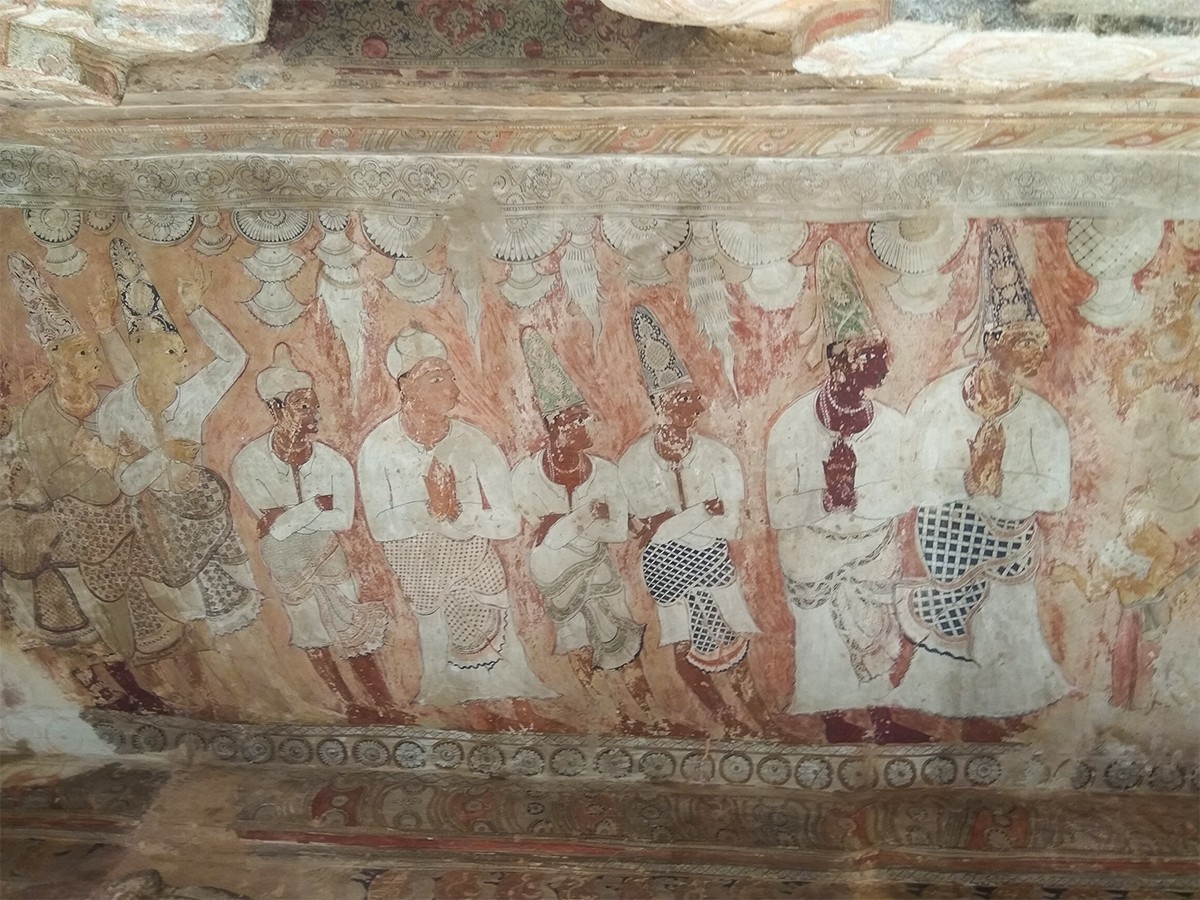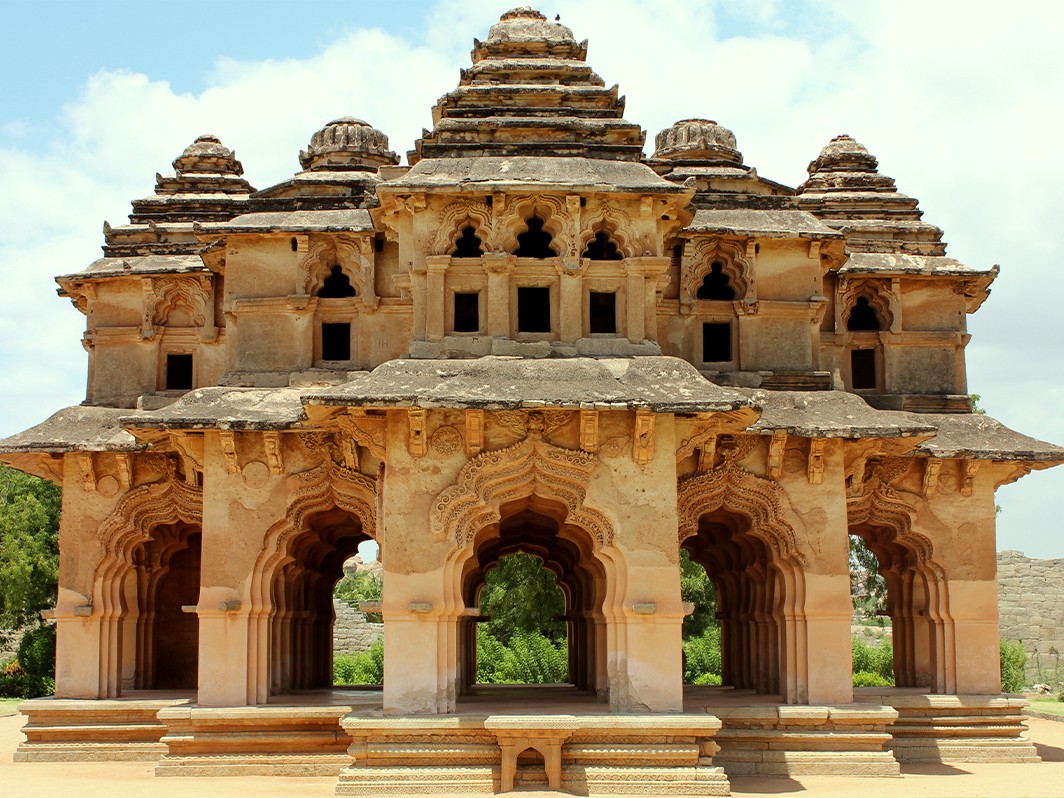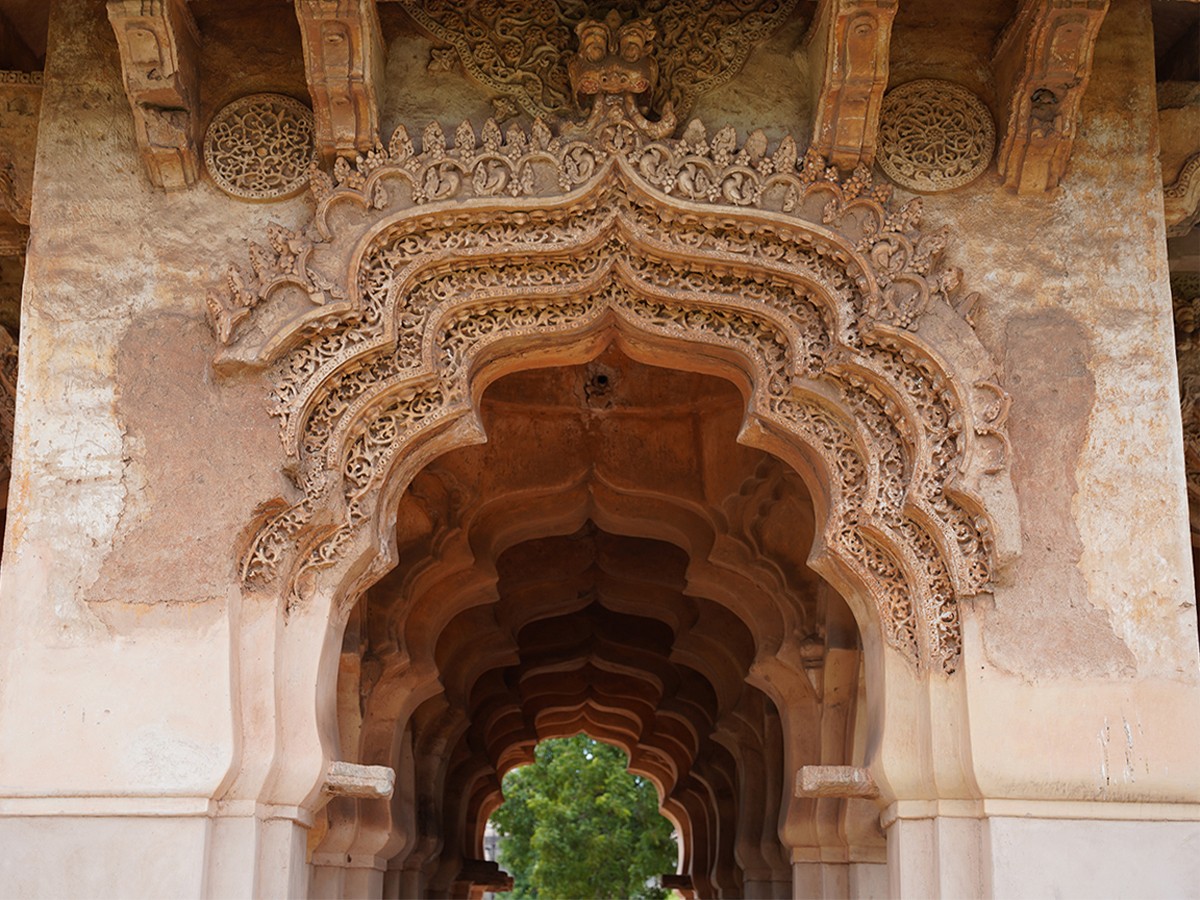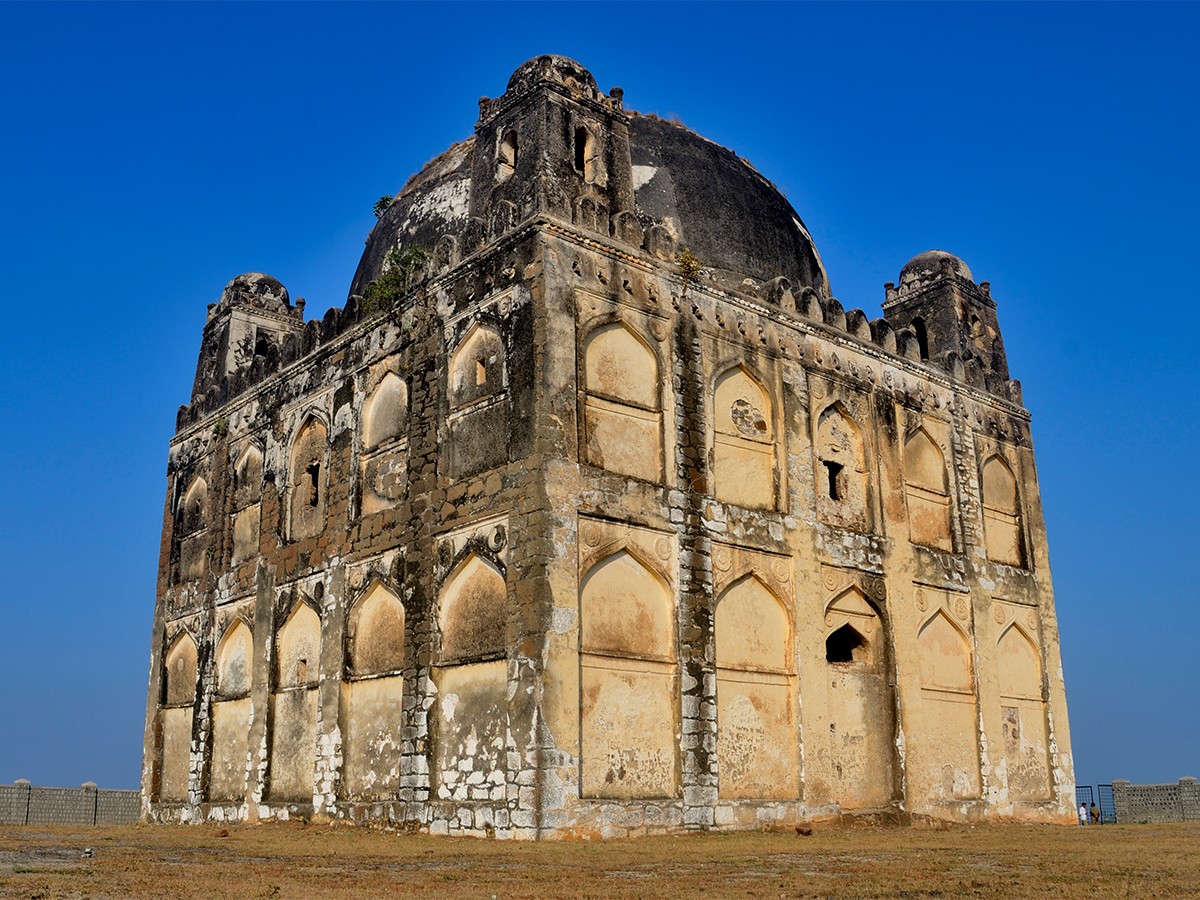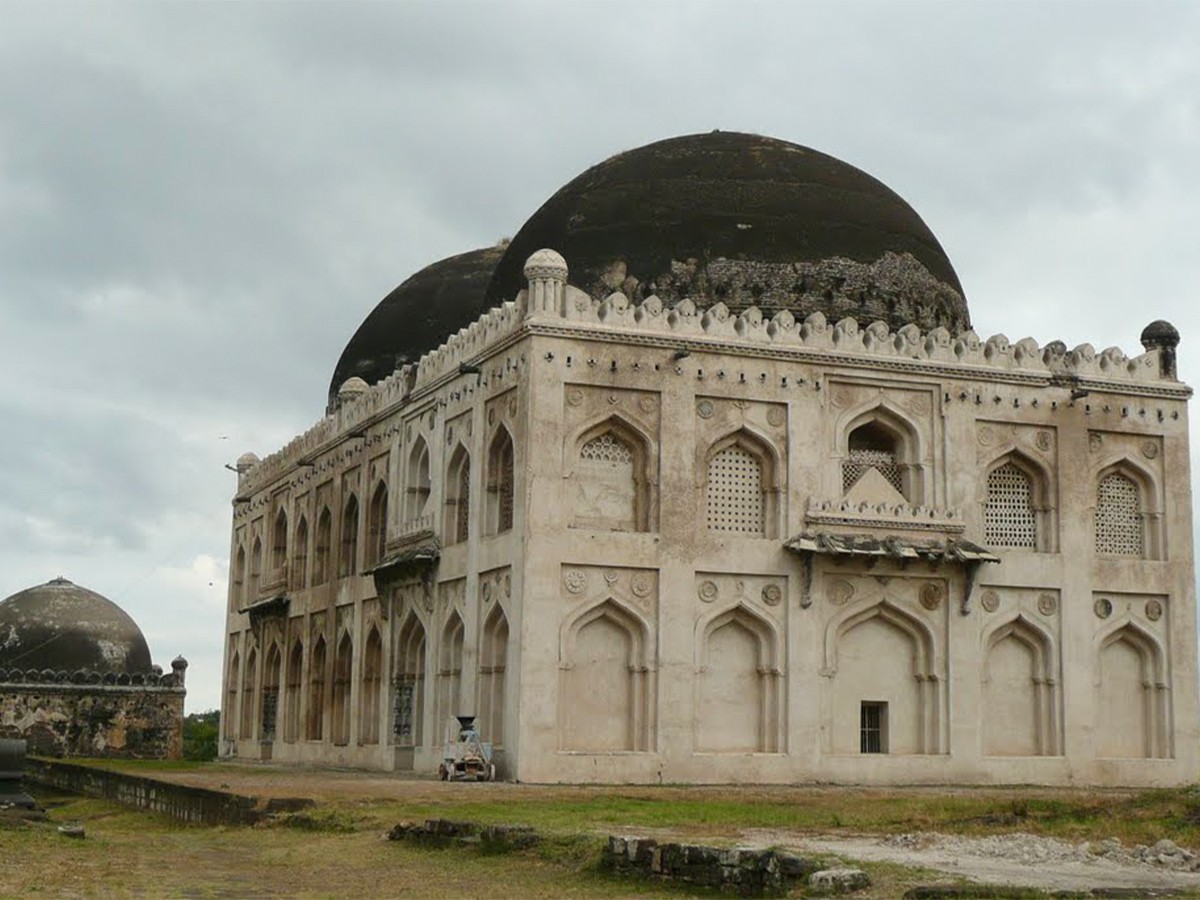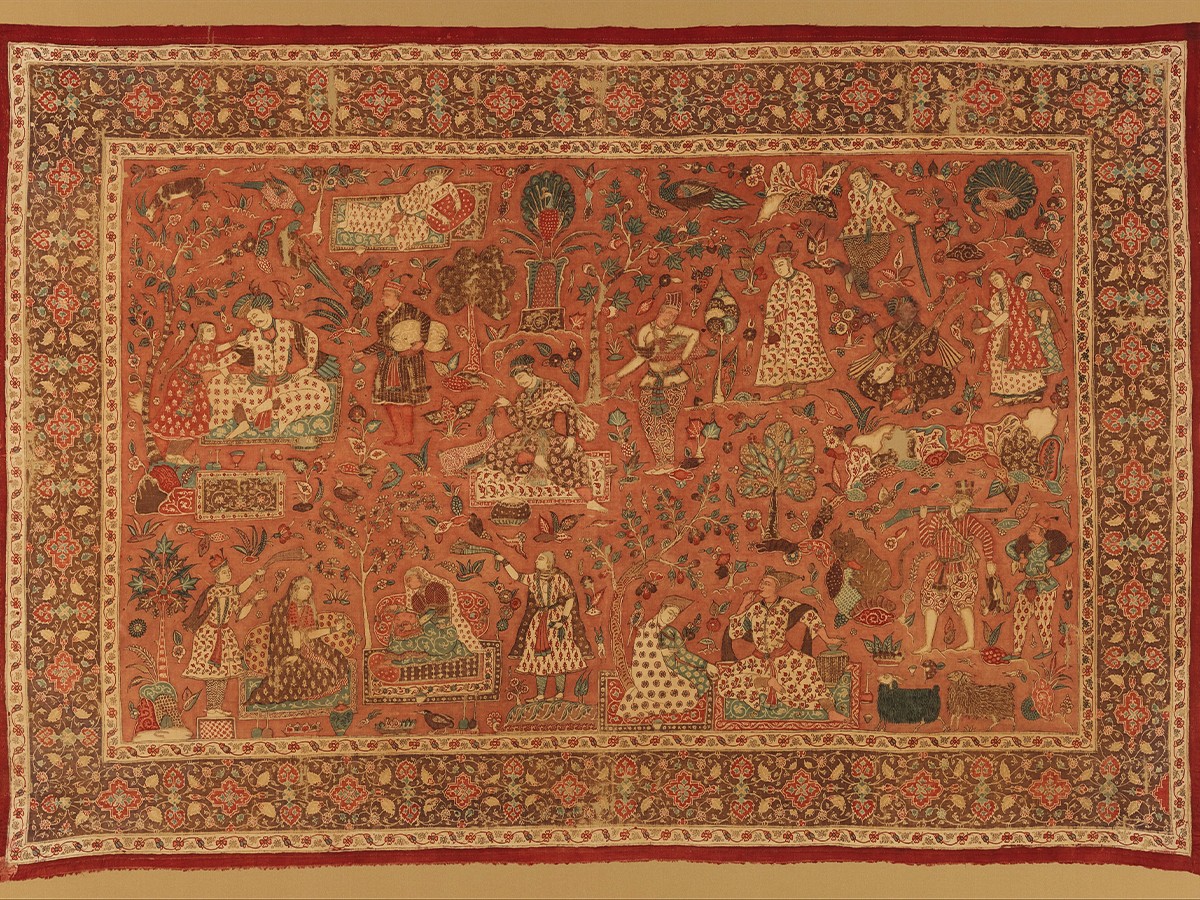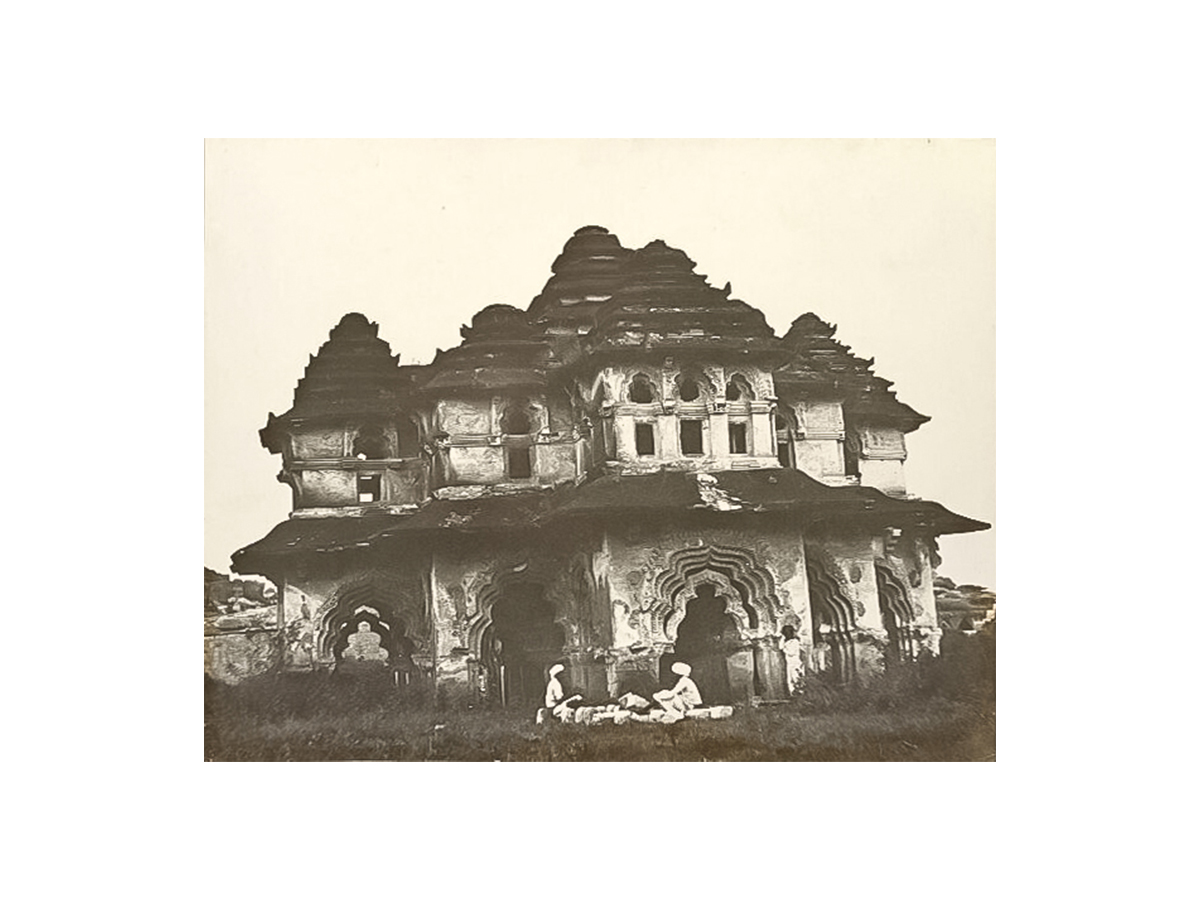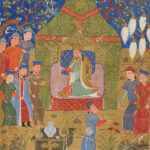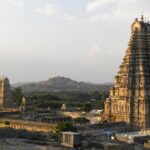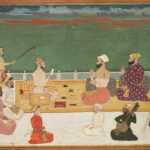Persianate Interactions Take Place in the Deccan
1400–1500
The Vijayanagara Kingdom and the Bahmani Sultanate establish diplomatic ties with the Timurid court. Their constant conflicts and the resulting demand for human capital attracts Persian immigrants from traders and administrators to soldiers and artists, who arrive in the Deccan alongside Sufi orders from northern India.
The West Asian ports of Aden and Hormuz become important entrepôts for horse-trading in the region. Islamicate influences in the cultural sphere are evident at sites like Gulbarga and Vijayanagara in present-day Karnataka. In the case of the latter, the influence of Islamic architecture is seen in the royal enclave buildings, especially in the use of multi-foil archways. Islamicate influences also seep into courtly fashion, as seen in the kabaya, a long tunic, and the kullayi, a type of headgear, both inspired by the Arabic qaba and the kullah, respectively.
Bibliography
Fritz, John M., and George Michell. “Royal Centre.” Vijayanagara Research Project. Accessed October 6, 2023. https://www.penn.museum/sites/VRP/html/Royal.html.
Khan, I. A. “Arabian Sea Trade in the 15th and 16th Centuries.” Proceedings of the Indian History Congress 39, no. 1 (1978): 907–14. http://www.jstor.org/stable/44139438.
Wagoner, Phillip B. “‘Sultan among Hindu Kings’: Dress, Titles, and the Islamicization of Hindu Culture at Vijayanagara.” The Journal of Asian Studies, 55, no. 4 (November 1996). http://www.jstor.org/stable/2646526.
Feedback 
This entry appears in
Art in South Asia
Visit Timeline
Associated Timeline Events
First Published: March 11, 2024
Last Updated: August 17, 2024



